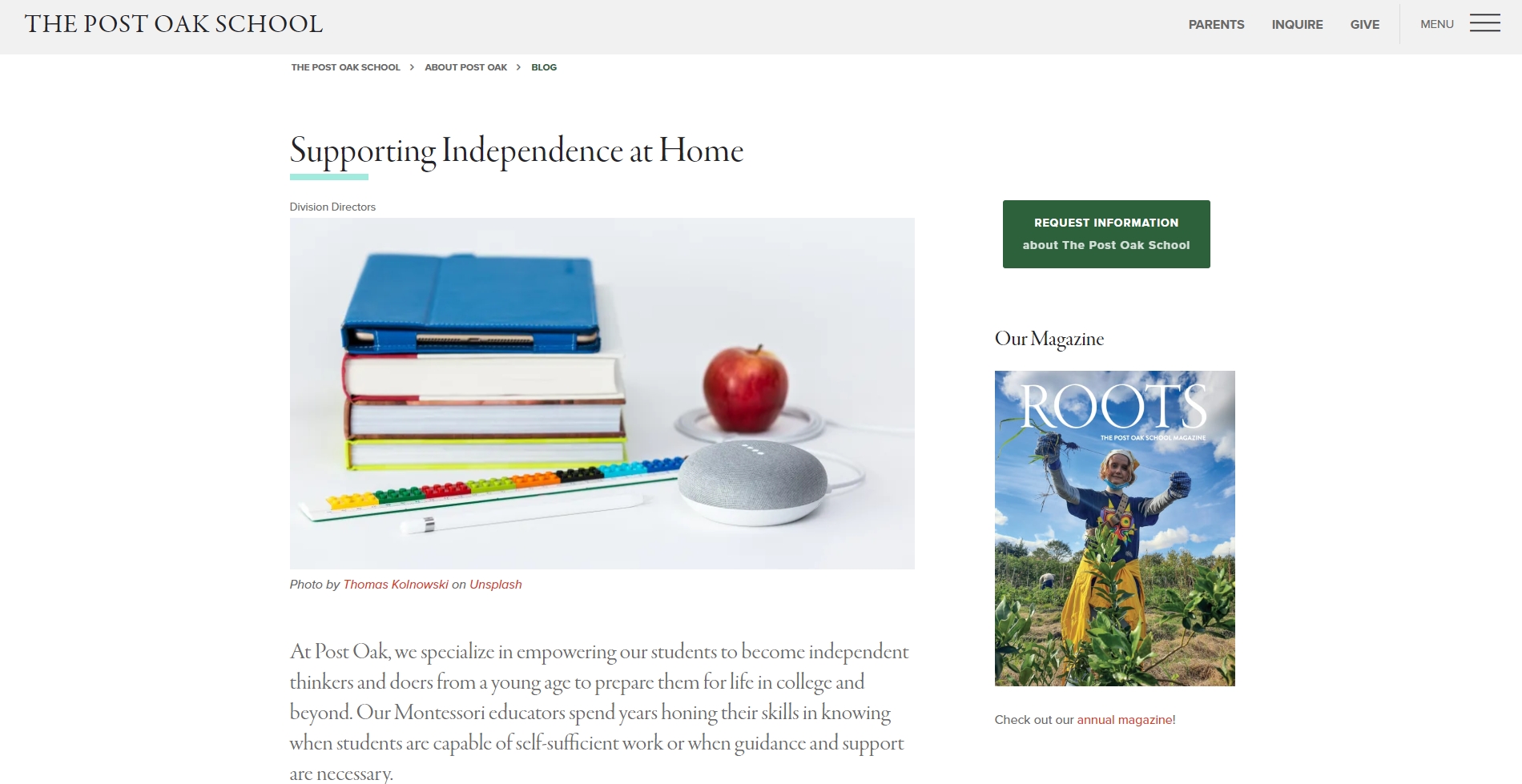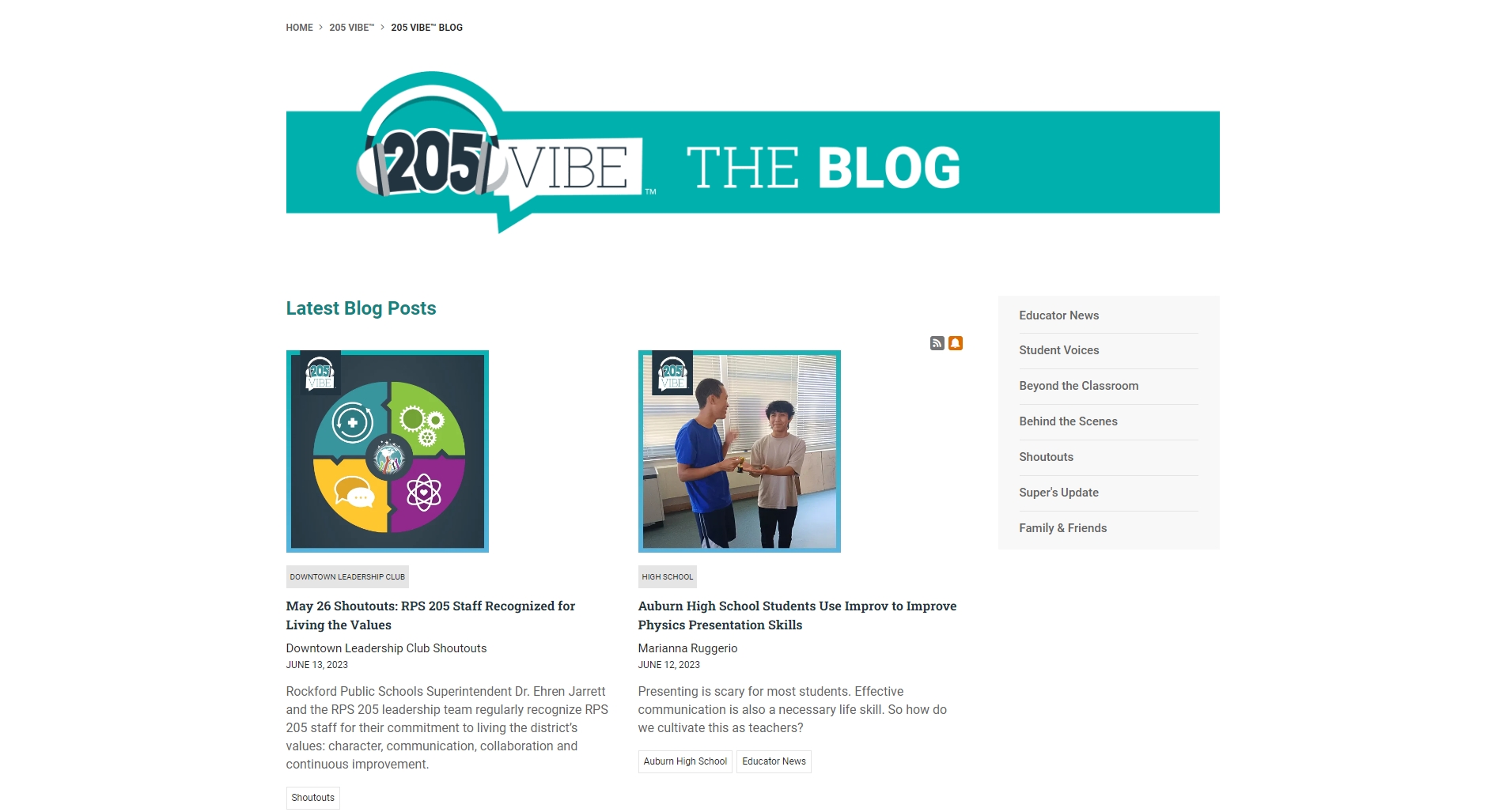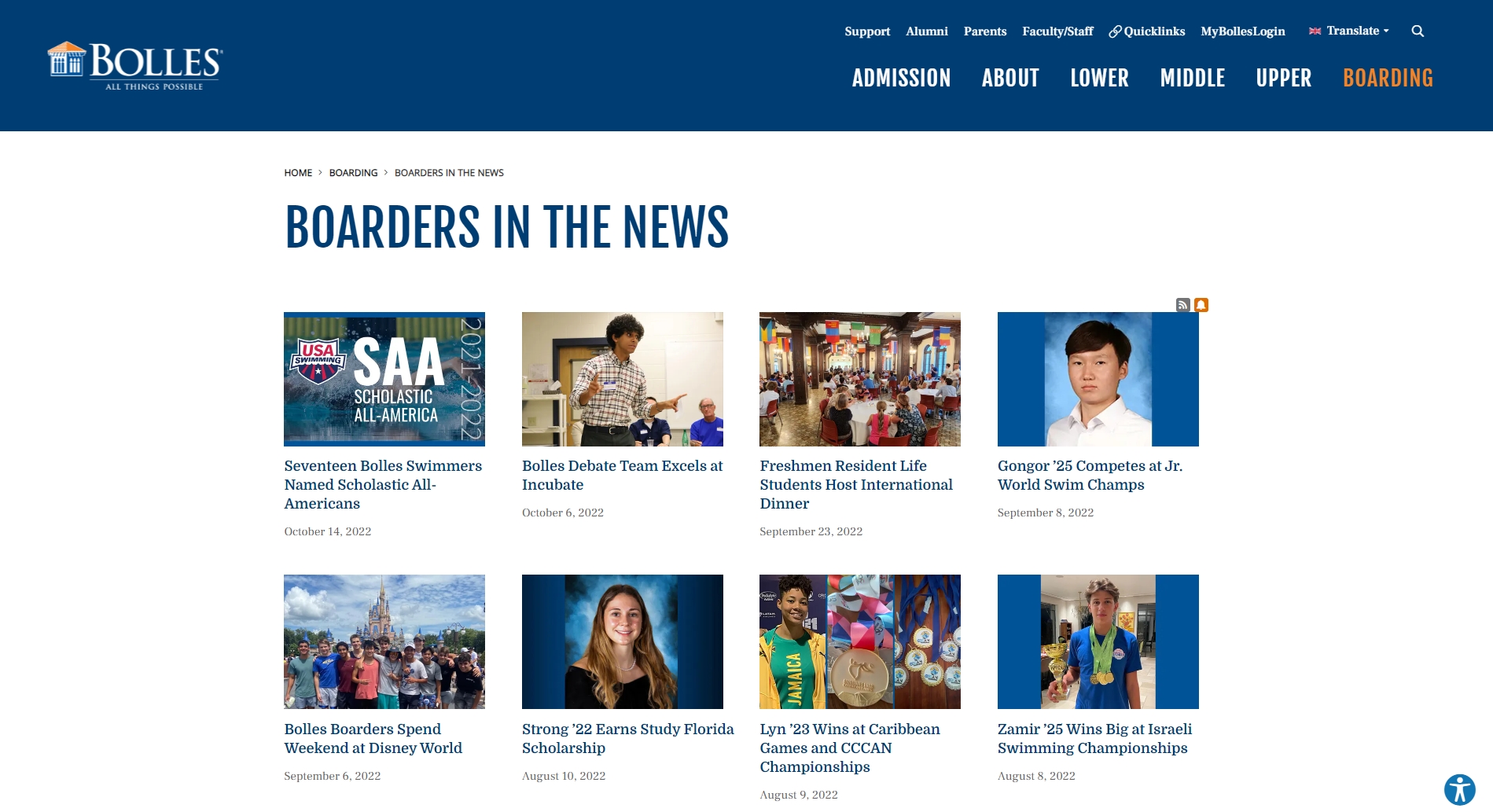In today’s global setting, where there’s a multitude of choices and prospects, it has become increasingly challenging for educational entities to bolster student engagement and enrollment. The escalating competition and the rising demand for online learning necessitate that private schools and learning institutions reassess their operational tactics to stay ahead of market transformations.

In order to adapt to the shifting landscape of the education sector and foster enduring growth, marketing, and communication divisions face the complex task of balancing multiple factors and objectives. These include student and faculty contentment, the establishment of alumni connections, the management of admissions, and fundraising. As a consequence, it becomes crucial for private schools to formulate a potent digital marketing strategy. Such a strategy should aim at effectively reaching out to prospective students, parents, and communities in order to enhance their brand visibility and student enrollment – a goal that digital marketing can indeed accomplish.
In this article, you’ll find:
- 9 Digital Marketing Strategies for Private Schools →
- Redesign Your Website
- Initiate a School Blog
- Publish Relevant, Expert Content
- Focus on Search Engine Optimization
- Use Social Media to Tell Your Stories & Build Connections
- Embrace Regular and Impactful Social Media Advertising
- Implement Email Marketing Automation
- Invest More Time and Resources into Video
- Don’t Forget About Analytics
- Digital Marketing Strategies for 2 Special Categories of Private Schools →
- 3 Marketing Tips for Private Schools →
Digital marketing can be a powerful tool for schools and universities to lure in potential students by establishing a robust online presence. Through the strategic use of SEO tactics, educational establishments can optimize their website to be a top search result when prospective students search for relevant study areas.
By generating compelling content and implementing the right strategies, schools can capture the attention of a vast number of prospective students who might not have thought about them as an option before.
Strategy 1: Redesign Your Website
Before you jump to conclusions and think, “well, of course, you’re a website company, naturally you’ll advise us to redo our website,” let’s explore some facts. Numerous industry studies suggest that a subpar website design can prove to be the weak link in most brand images.
A negative website experience — particularly on mobile devices — can tarnish your image, reducing user engagement, site traffic, and more.
Reflect on the following statistics:
- 79% of users who aren’t satisfied with a site will return to their search and seek an alternative.
- 52% of users state that a poor mobile experience decreases their likelihood of interacting with a company.
- Mobile users are five times more likely to quit a task if the site is not optimized for mobile.
- 40% of site visitors will abandon the site if it takes longer than three seconds to load, with 47% expecting it to load within two seconds.
- 94% of initial impressions are related to design, as suggested by this article, which likens first impressions of websites to job interviews: you only get one chance.
So, launching a newly designed website requires significant work to get it right. But before you pour resources into various marketing tactics, you need to ensure you have a solid base.

If your school or district’s existing website meets any of the following criteria, it should be your top marketing focus for this year:
- The website is over 3 years old.
- The website is responsive, but not designed with a mobile as a priority.
- Compared to direct competitors and major brands, your website appears outdated.
- Navigation on your website is complicated.
Strategy 2: Initiate a School Blog
Commencing a blog could serve as a powerful platform for disseminating advice, establishing thought authority, recounting untold narratives, promoting community voices, building a robust content archive, and enhancing your natural search engine performance. While a school blog might not be as crucial as other marketing tactics listed here, such as your website, it provides an excellent starting point for schools and districts keen to seize more control over their online narratives.
Prior to launching a school blog, pose these questions to yourself:
- Who will be responsible for creating our blog content?
- Where will our blog content be hosted?
- How will our editing process be structured?
- Who will our primary audience be?
- What kind of subjects are we interested in exploring?
- Do we possess the resources to maintain regular posting? (I suggest at least once weekly.)
Take a look at The Post Oak School, which runs an outstanding blog that showcases student and alumni experiences, thought leadership, and useful tips for parents.

Another example is Rockford Public Schools, which operates a blog under their 205 Vibe brand. The blog abounds with captivating stories that spotlight their community members and their achievements.

Strategy 3: Publish Relevant, Expert Content
The true cornerstone of your website is its content. Content that is distinctive, enlightening, and unparalleled is what captivates your audience the most.
Your content should encompass:
- Regular blog updates
- Educational articles
- Appropriate details about your school
- School’s ethos
- The staff members
- Student body
- Plus any critical updates
When potential students and their parents are in search of a school and land on your website, the plethora of content pertinent to their needs will entice them to stick around.

Having a blog provides you the opportunity to routinely share fresh content that is original, inventive, enlightening, and portrays your school as an authority. Your blog ought to be an invaluable resource for parents considering your school for their children, as well as for those whose children are already enrolled.
An additional beneficial strategy is to invite various contributors to the blog, thereby offering your audience an extensive array of voices and viewpoints.
Strategy 4: Focus on Search Engine Optimization
Ensure your website is finely tuned for SEO. This entails:
- Including relevant keywords
- Monitoring your site’s rankings with rank-checking tools
- Implementing location-specific markups
- Posting consistent, high-quality content
- Utilizing engaging language
- Maintaining a user-friendly and visually pleasing layout
- Publishing regular, top-notch content
- Ensuring optimal mobile device performance and more
Constructing a superior SEO strategy involves a myriad of factors. Consider collaborating with an SEO professional well-versed in the intricacies of website optimization.

Regardless of whether you opt for a marketing agency or an independent freelancer, it’s paramount that your website undergoes the necessary optimization to secure a premier position in search engine rankings. This way, when parents initiate their search for local schools, your institution is prominently displayed among the initial results.
Strategy 5: Use Social Media to Tell Your Stories & Build Connections
Leveraging social media marketing can significantly enhance your engagement with both the parents of your current students and potential future learners.
This platform empowers you to:
- Provide insights into your daily activities
- Disseminate important news or thrilling events
- Interact via comments and messages, offering responsive solutions
- Allow parents to familiarize themselves with you
Moreover, social media provides an excellent platform for narrating your school’s journey, introducing your staff, and highlighting the achievements of your students. Offering valuable, genuine content often resonates well with people. It’s a powerful marketing strategy that can touch the hearts of your audience, fostering meaningful connections.
Utilize your social media channels to narrate compelling stories, and demonstrate the impact your school has on its students and the broader community.
Social media is where disruptive discovery happens. It’s where you can retarget and remarket to private school searchers. In this video, the Truth Tree channel covers some of the top platforms, and how you can use them for all your social media marketing needs.
Strategy 6: Embrace Regular and Impactful Social Media Advertising
If your private institution hasn’t yet allocated resources to social media advertising, the perfect moment to start is now. Given the significant amount of time potential families spend on social media, it’s a clever and cost-effective method to amplify awareness and eventually boost enrollment numbers.
Social media is an excellent medium for advertising due to several reasons:
- The average cost-per-click is substantially lower than search ads
- Your reach can be diversified using a mix of lists and campaigns
- A plethora of ad formats are available for experimentation
However, the execution needs to be flawless.

Past unsuccessful attempts with social media ads could be attributed to issues with the content, design, audience selection, or even the goal of your ads. For instance, promoting your school’s open house to a list that isn’t familiar with your school will likely be ineffective.
For those planning to leverage social media advertising this year, consider these three effective campaigns to kick-start your efforts:
- A Top-of-the-Funnel Campaign for Awareness: Aim to connect with new audiences? Upload demographic data about your current families to construct a lookalike audience. The ad content and design for this campaign should be light and free from a forceful “pitch.” The primary objective here is to familiarize new audiences with your school’s name.
- A Middle-of-the-Funnel Campaign for Conversion Enhancement: Engage users who have already visited your website through a Facebook Pixel retargeting campaign. Prompt this group to inquire or apply.
- A Bottom-of-the-Funnel Campaign to Promote Re-Enrollment: The task doesn’t end once a family enrolls. During the re-enrollment season, run ads targeting current families, featuring value-added content like students’ success stories.
Strategy 7: Implement Email Marketing Automation
Email marketing is an effective approach to foster leads, sustain and enhance relationships with current students, parents, and alumni. It has a broad reach as your audience is more prone to regularly check their emails.
Additionally, it offers the convenience of personalization, enabling you to segment your audience, thereby boosting conversions and engagement. Emails encompassing admission updates, programs, forthcoming events, and new blog posts provide meaningful content to captivate your target audience.

Leveraging the data you hold about your audience in your CRM, marketing automation facilitates audience segmentation and real-time personalization of communications. This aids in engaging the right students and helps you accomplish your enrollment objectives.
Strategy 8: Invest More Time and Resources into Video
Video content generates a higher level of engagement than any other format. Therefore, start by taking small steps to incorporate video into your marketing tactics for your website, social platforms, and even emails.
Even if you’re currently stretched thin in terms of time and resources, there’s positive news for you! Creating video content has become easier than ever. After a year of low-resolution video communication, no one is expecting you to produce cinema-like quality.
If you’re interested in integrating more videos into your marketing for the year, consider these suggestions:
- Initiate on a small scale. Try to upload a new video on social media every week. It could be something amusing – like participating in the latest Instagram Reel trends – or an advertisement for an upcoming event. Tools such as Canva and Animoto simplify video editing for all proficiency levels.
- Brainstorm a roster of video content ideas. Testimonials, educational tips, and interviews make for enjoyable and engaging videos. Invest time into a YouTube approach. If your school routinely produces longer videos, investing in YouTube could boost your school’s organic search results.
- Embrace live-streaming. It has evolved from being a “nice-to-have” to a “must-have” feature, regardless of whether you’re resuming in-person events. Leverage the assistance of your community. Students, in particular, can be excellent sources for generating video content.
Strategy 9: Don’t Forget About Analytics
Technology empowers educational establishments to adapt to emerging market changes. Utilizing data and analytics, your organization can make knowledge-driven choices about your operational practices by gathering and deciphering data.
Whether your institution is a school, university, college, or learning hub, leveraging data and analytics enables you to gain a more comprehensive understanding of your campaigns, facilitating their optimization for enhanced performance.

Although boosting enrollment is your primary objective, it is equally important to utilize analytics to assess and enhance your institution’s brand image, student involvement, and retention, as well as operational productivity.
Digital Marketing Strategies for 2 Special Categories of Private Schools
Regardless of the specific type of private school you operate, the fundamental goals invariably circle around enhancing brand visibility and augmenting inquiries, applications, and enrollments. Here, we delve into some tailored marketing methods that can catalyze digital marketing effectiveness for specific private school niches:
Digital Marketing Strategy for Boarding Schools
One distinctive aspect of boarding school clientele is their potential geographic diversity. Prospective students might be local residents, from another state, or even from another country. This extensive geographic spread provides a distinctive opportunity to cater to a broader and more diverse set of families.
Understanding where your current families reside and the regions that evince the most interest in your school is crucial. You can leverage this information to devise a geo-targeting strategy — an ad campaign intended to target a demographic within a specific area. This strategy can bolster recruitment in zones where your school has previously thrived and extend your influence to promising areas.
Bolles, a boarding school in Florida, offers a “Boarders in the News” section that features current news stories about its students. This is a great way to engage prospective students while reinforcing the value of your institution to current families.

Consequently, your school can adopt a more personalized and concentrated approach to its marketing efforts. The identification of geographic locations that matter most to your boarding school is a vital step towards deciding where to channel marketing resources, determining which copy or images will resonate with the specific audience, and ultimately, deciding the time investment required for these marketing initiatives.
Digital Marketing Strategy for Religious Schools
For families seeking a religious private school, pivotal factors they take into account include the school’s community feel, curriculum quality, and traditions. By maintaining a website that underscores these features as well as unique aspects such as co-curricular programs and exclusive school activities, you can assist parents in making informed enrollment choices.
Showing rather than telling is a powerful way to communicate the faith of your school. Often more effective than the written word, powerful images or videos that capture the essence of your mission can inspire. In some cases, video marketing engages parents better than any other medium — having a video on your website or landing page can increase visitor conversion by eighty percent.
Another collaborative approach with these organizations is to feature your school on their Facebook page and other social media platforms, further extending your visibility to an interested audience.
3 Marketing Strategy Tips for Private Schools
When it comes to promoting a private academic institution, there isn’t a universally effective method. The optimal promotional strategy for your institution would largely depend on the nature of the school, its geographical position, and the target demographic.
However, there are certain general guidelines that can aid you in formulating a productive promotional blueprint for your private school.
- Clarify your target demographic: Who are you aiming your promotions at? It’s crucial to be as explicit as possible when clarifying your target demographic. This will assist you in crafting messages that resonate with them, leading to a rise in admissions.
- Examine your rivals: Are there other private schools in your vicinity? What distinguishes them? How do they promote themselves? Understanding the answers to these questions will equip you to devise strategies to distinguish your school and draw in more pupils.
- Pinpoint your unique selling propositions (USPs): What differentiates your private school from your competitors? This could range from small class sizes and personalized attention to a challenging curriculum or a robust sports program.
Your USPs should be at the heart of all your promotional communications.
Useful Resources
Conclusion
The expectations of parents have escalated to unprecedented levels, necessitating the evolution of your school’s online marketing and communications strategy to match these expectations.
Welcome to our “new normal”. As your educational institution or district initiates the strategizing for marketing and communications for the upcoming academic year, utilize the suggestions provided in this blog. This will help you curate a “must-have” list that ensures your marketing and communications approach is prepared for the future.
- Overview of 22 Low-Code Agencies for MVP, Web, or Mobile App Development - October 23, 2024
- Tips to Inspire Your Young Child to Pursue a Career in Nursing - July 24, 2024
- How Parents Can Advocate for Their Children’s Journey into Forensic Nursing - July 24, 2024

Digital marketing is a dynamic and ever-evolving field that encompasses a wide range of strategies and tactics to promote businesses, products, and services in the online realm. It revolves around leveraging digital channels such as search engines, social media platforms, email marketing, content marketing, and more to reach and engage with target audiences.